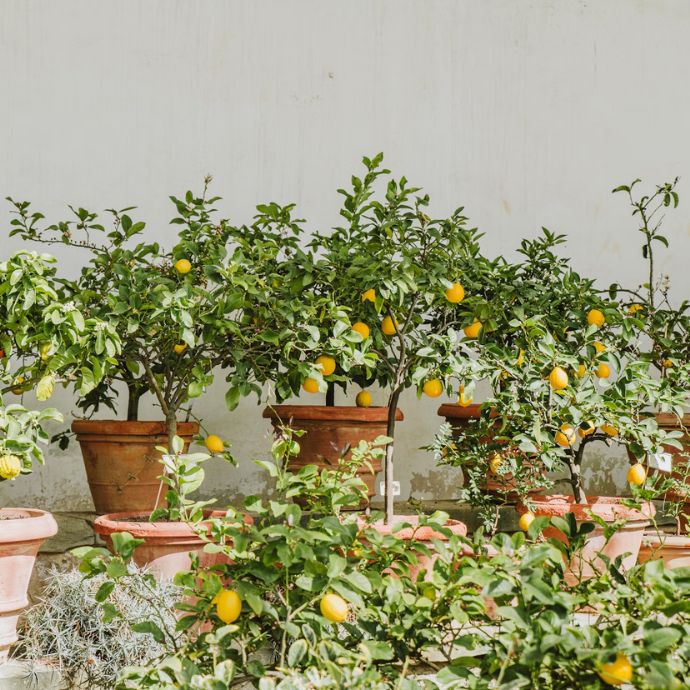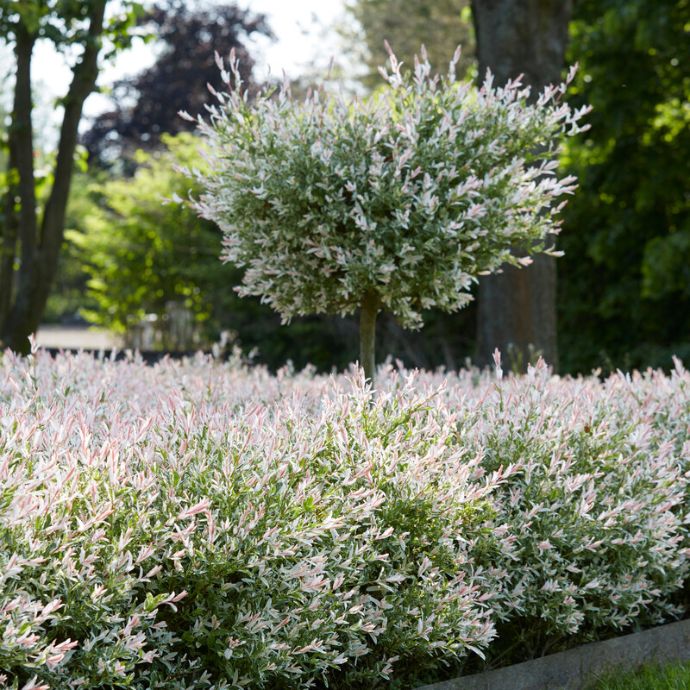Advice & Inspiration
Types of Ivy: Which Is Best for You?

Ivy sometimes gets a bit of a bad rep, but the truth is that it’s a wonderful evergreen plant that improves any garden, be that as a vigorous climber or a scrambling groundcover plant. There are many different types of ivy, and each provides something a little different. In this guide, we’ll walk you through some of our favourite ivy plants for a range of different wants and needs.
Jump to:
- Why choose ivy?
- Best ivy for shade
- Best ivy for wildlife
- Best fast-growing ivy
- Best variegated ivy
- Best ivy for autumn colour
- How to grow ivy
Why choose ivy?
Hedera helix (common or European ivy) is a plant with many different faces; for some, it’s the perfect plant for quickly covering waste spaces or eyesores. For others, it’s a storied plant with a rich cultural and mythological heritage, having been worn by Dionysus, the Greek god of wine-making.
With its fast growth rate, lush evergreen foliage and self-clinging stems, ivy is the perfect plant to grow up a property’s facade. Add to that the fact that ivy is incredibly easy to grow and you can begin to understand this plant’s enduring popularity.
Best ivy for shade
Variety: ‘Hibernica’ Ivy
Almost all ivy plants grow well in shade, and ‘Hibernica’ (also known as Irish ivy) is no exception, growing well in both full and partial shade. Perfect as a groundcover plant to help suppress weeds, this variety is ideal for woodland-style planting schemes, dazzling with its emerald green leaves and ornamental black berries.

Best ivy for wildlife
Variety: ‘Glacier’ Ivy
With its silver and cream margins, ‘Glacier’ is a stunning ivy variety in its own right, but when you add onto that its wildlife appeal – berries for birds and leaves for holly blue caterpillars. Hedera helix is recognised by the RHS as one of its Plants for Pollinators, a designation awarded to plants that have proven particularly beneficial to pollinators like bees and other pollinating insects.

Best fast-growing ivy
Variety: Any
Pretty much all common ivy plants grow quickly, regardless of the particular variety, with growth rates of 70cm per year not uncommon. There are more compact varieties that grow to just a metre so tall, making them suitable for patio and balcony growing, as well as more vigorous, sprawling ivies that can reach heights of eight metres (and sometimes even taller).

Best variegated ivy
Variety: ‘Dentata Variegata’ Ivy
If you want a tad more colour from your ivy, then going for a variegated variety is a good option. ‘Dentata Variegata’ isn’t an English ivy, but a Persian ivy (Hedera colchica). Its tactile green leaves have a glorious cream margin that adds an extra visual pop to what’s already a highly-impressive plant; this variety is a recipient of the Royal Horticultural Society’s Award of Garden Merit, an award conferred upon plants shown to grow particularly well in British gardens.

Best ivy for autumn colour
Variety: ‘Veitchi’ Boston Ivy
Ok, so while this technically isn’t an ivy, belonging instead to the same family as Virginia creeper, it’s commonly called Boston ivy, so allow us a bit of leeway… ‘Veitchi’ boasts luscious green leaves in spring and summer, before turning a spectacular ruby red in autumn – bold doesn’t begin to cover it.

How to grow ivy
Ivy plants are nice and easy to grow, and with these top tips, you’ll be standing back and enjoying that fabulous foliage in no time, whatsoever.
Plant in fertile, well-drained (but moist) soil
While ivy plants grow in a wide range of soil conditions, a nice loamy soil with good drainage (but that retains some moisture) is preferable. When you plant your ivy, ensure that the hole is the same depth as the plant’s rootball. Give your ivy a good watering once you’ve backfilled the hole and firmed the plant in.
Consider what you want from your ivy (groundcover or climber)
Do you want a groundcover plant or a climber? If you want your ivy plant to function as groundcover, simply plant it in your flower bed as you would any other plant. If, however, you’ve acquired an ivy for the purpose of covering a vertical surface – be that a wall, fence or even a tree – make sure your ivy is planted near the base of said surface, angled slightly towards it. Because ivy is self-clinging, you don’t need to worry about tying your plant into a support.
Feeding and pruning
A low-maintenance plant, common ivy doesn’t require any additional feeding, and nor is any routine pruning needed. If it’s getting a bit too overgrown or ungainly for your liking, then you can always cut back your ivy to a more manageable shape. If you’re going to do this, it’s best to do it in spring.
Can ivy damage walls?
Whilst ivy growth can exacerbate cracks in building walls, it typically only affects already-damaged walls. In fact, a blanketing of ivy on your home’s walls can actually help improve its insulation over the winter months!

Final thoughts
We love ivy plants here at Roots; they offer gardens a charisma and charm that few plants can rival. And if you went into this blog post with a disparaging attitude towards these plants, hopefully this guide we’ll have gone some of the way towards changing your mind.
















